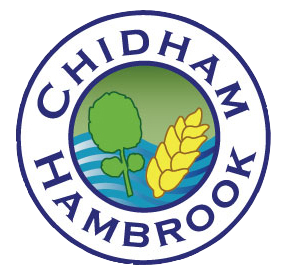
Though there are no current plans to build on the site, the campaign to protect it for future generations continues
Maybush Orchard has been an orchard for over a hundred years. Like most long established orchards, it is a wonderful habitat for the wildlife of the area, especially so because of the mature apple trees, grass underlay, and because it is not too tidy. There are towering oaks, ash and poplar trees on its perimeter. In all it is around 8 acres, and its value as habitat is enhanced by its proximity to Maybush Copse. If we lost Maybush Orchard it would diminish the harbour, the village, and everyone who lives here.
Below a map shows Maybush Copse (highlighted in yellow) the orchard (in red) and the proposed development area (in purple)

About the orchard wildlife…
 Summer 2015 – This Turtle Dove is currently a temporary resident of Maybush Orchard – a red list species. Turtle Doves have been calling from two locations in the orchard, as well as in Maybush Copse. I say temporary because they migrate at the end of each summer, wintering in Southern Africa.
Summer 2015 – This Turtle Dove is currently a temporary resident of Maybush Orchard – a red list species. Turtle Doves have been calling from two locations in the orchard, as well as in Maybush Copse. I say temporary because they migrate at the end of each summer, wintering in Southern Africa.The distinctive call of the Turtle Dove is evocative of summers past, not so much a sound you may be familiar kamagra with today.
Turtle Doves are seed eaters. They may come to your garden if you put seed down.They are particularly partial to the seeds of Fumaria Officinalis but also Birdsfoot Trefoil (and they will find a lot of that in Maybush Copse)This photo was taken in a garden immediately adjacent to Maybush Orchard.How to help Turtle Doves in your garden – advice sheet.
You may know that old traditional orchards are designated as UK biodiversity action plan priority habitats. Habitat is vital to biodiversity. Destroy habitat and you lose those creatures that enhance all our lives – some rare, some rarely seen, some that only stay a short while on their migration, some just a joy to see.




We do not have access to the site, but the Developer commissioned reports found :
5 species of Bat – Common Pipistrelle, Soprano Pipistrelle, Noctule, Leisler’s and Myotis bats (either Whiskered Brandt or Natterers)
Brown Long Eared Bats also forage there.
All sorts of insects –
Stratimys Potamida – Nationally scarce
Campiglossa Malaris – Endangered RDB 1
Merzomyia Westermanni – Nationally Scarce
Myopities Inulaedysenntericae – Rare RDB3
Gymnosoma Rotundatum – Rare
91 species of moth – Nine NERC S41 and UK BAP species were recorded.
Synanthedon myopaeformis – Nationally notable
Rhopobota stagnana – Nationally scarce
Pediasia contaminella – Nationally scarce.
The site was considered to be of local entomological importance …
in studies done in 2012, a cold and wet summer.
I saw stag beetles last summer. (not found by the developer’s study)
I have seen common lizards(2015) , toads, newts, frogs as well as slow worms on the margin of the orchard.
